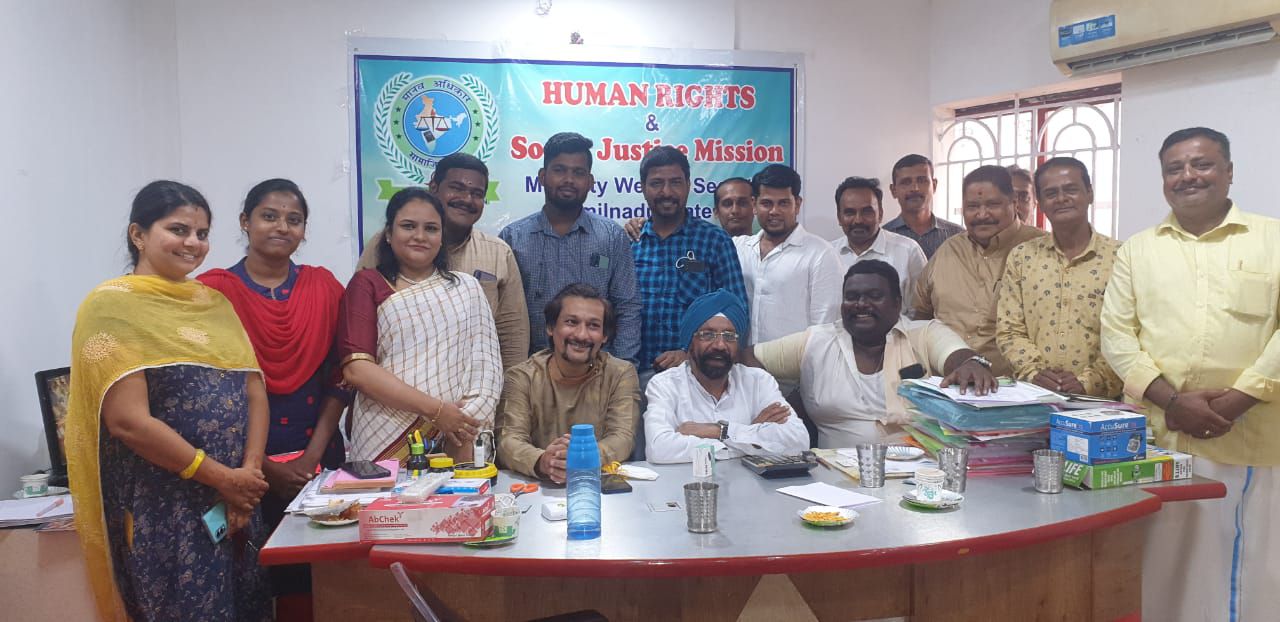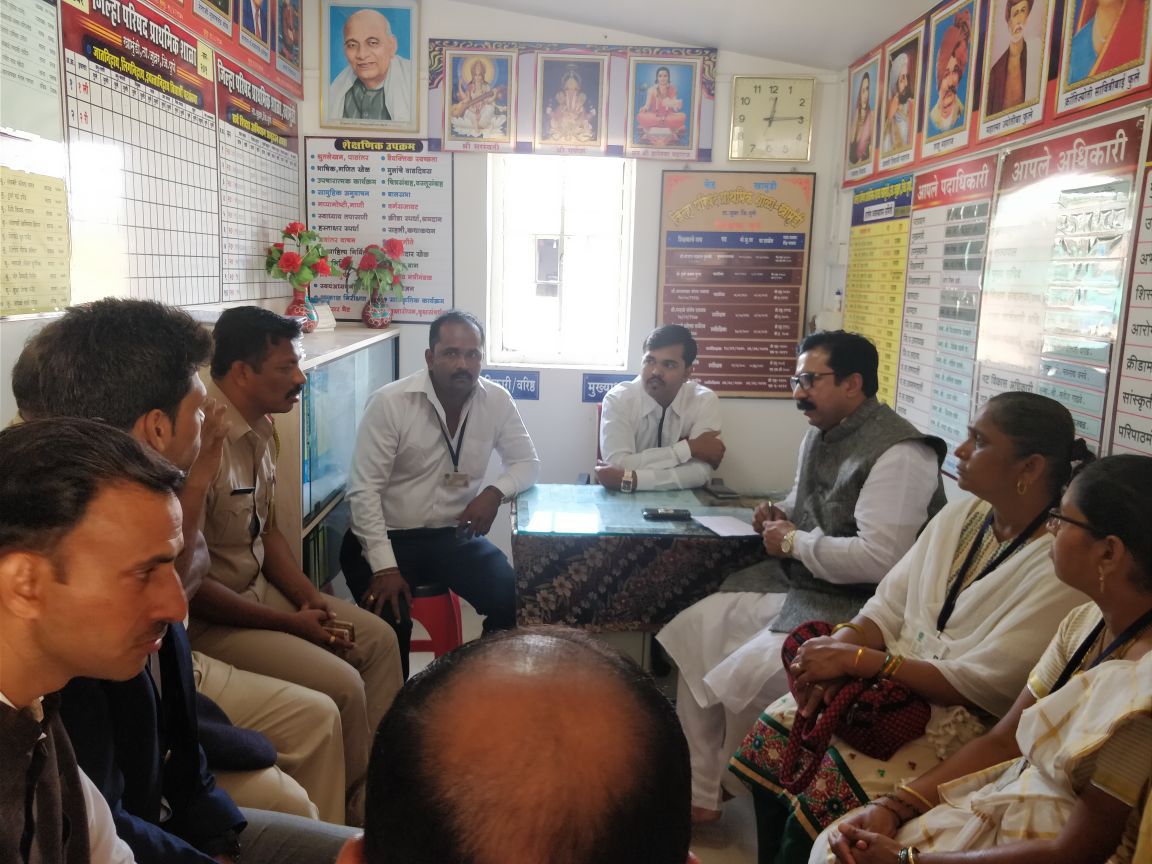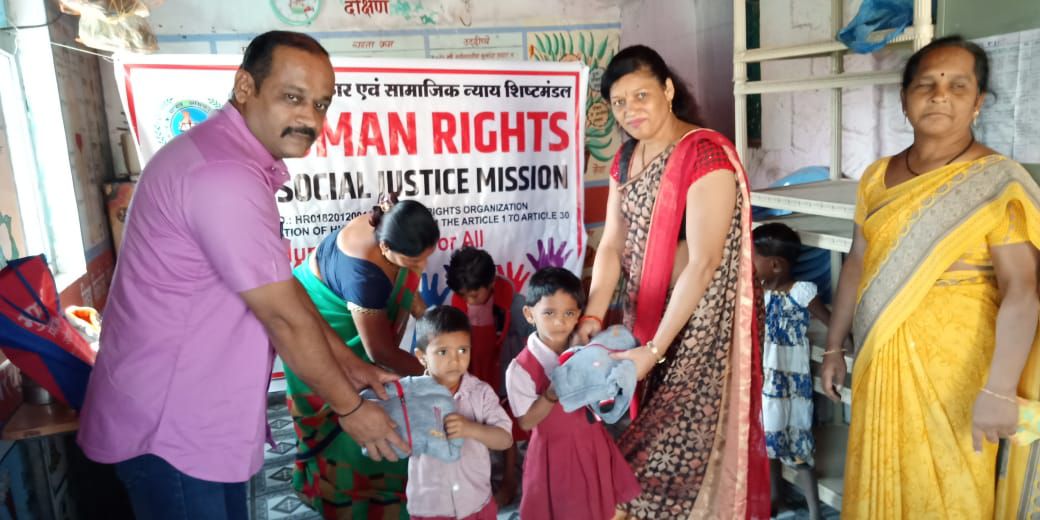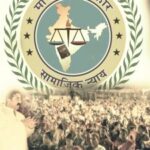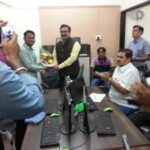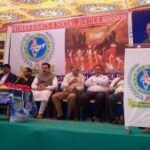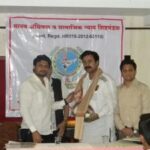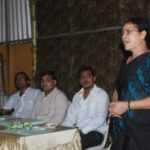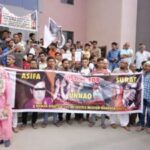Clouds of Injustice Bhopal Disaster 20 years on by Amnesty International
Twenty years ago around half a million people were exposed to toxic chemicals
during a catastrophic gas leak from a pesticide plant in Bhopal, India. More than
7,000 people died within days. A further 15,000 died in the following years. Around
100,000 people are suffering chronic and debilitating illnesses for which treatment is
largely ineffective.
The disaster shocked the world and raised fundamental questions about
corporate and government responsibility for industrial accidents that devastate
human life and local environments. Yet 20 years on, the survivors still await just
compensation, adequate medical assistance and treatment, and comprehensive
economic and social rehabilitation. The plant site has still not been cleaned up so
toxic wastes continue to pollute the environment and contaminate water that
surrounding communities rely on. And, astonishingly, no one has been held to
account for the leak and its appalling consequences.
Close Encounters- A Reports on Police Shoot Outs in Delhi-2004 by PUCL
On 31 March 1997 two businessmen were shot dead in breu daylight by the Delhi Police in New Delhi’s busy Connaught Place. The two men were unarmed and the police team involved planted some guns to show the killing was justified. After being caught out in the attempt, the killing was later presented as a case of ‘mistaken identity.
On 26 December 2000 one person, Abu Shamal, was picked up by the police in front of witnesses from his Batla House residence in Okhla, New Delhi and later shot dead by the police. The police alleged that he had been involved in the bomb blast in the Red Fort on 22 December 2000.
On 11 January 2002, a youth named Upender, wanted by the U.P police, was picked up by the police at night and killed outside his house in Delhi’s Pandav Nagar area in front of eyewitnesses.
On 9 May 2002, two persons named Abu Bilal and Abu Zabiullah were shot dead near the parking lot of Humayun’s tomb. The police claimed that the dead men were Pakistani militants, who with 3 Kashmiri LeT militants were planning a series of terrorist attacks There were no eyewitnesses.
Fact Finding Report on Salwa Judum-2007 in Bastar Chattisgarh by IAPL
The International Association of People’s Lawyers (IAPL) is an international organi zation of human rights lawyers mostly coming from countries where exploitation is most severe, humanghts violations are widespread and the peoples’ struggles most intense. It has mem bers and chapters in Afghanistan, Brazil, Belgium, India, Nepal, Philippines, the Netherlands, and Turkey. It has observers and established solidar ity linkages with lawyers from Argentina, Aus tralia, Bangladesh, Canada, Colombia, Congo, Cuba, Japan, Germany, Greece, Mexico, South Korea, North Korea, Spain, United Kingdom and The United States.
Chhattisgarh an Indian State in conflict
In October 2007, the Indian Chapter of IAPL or ganized a Fact Finding Mission to observe and report on the situation in Chhattisgarh, a highly militarized area in the centre-castern part of India. The Fact Finding Mission was composed of some of the IAPL. Board Members as well as members of the Indian Association of People’s L Lawyers the Indian Chapter of IAPL. A video tea joined the Fact Finding t team Mission. The Mission was com posed of participants coming from Belgium, Bra zil, the Netherlands, the Philippines, Turkey and India. They visited Raipur, Jagdalpur, Dantewara, and surrounding rural areas from 22nd October to 26th October 2007,
Human Rights in India by ACHR 2009
The Asian Centre for Human Rights(ACHR) publishes its 2009 Annual Report
on Human Rights in India asthe Congressled United Progressive Alliance government assumes its second term following the elections. The findings of the report are a clear challenge to the new government. ACHR argues that the new government must find new answers to the growing security problem arising out of the Naxalism. Current security-driven responses are not working; indeed they may even be counter-productive. The report suggests that the root causes of Naxal violence, discrimination, marginalisation and exclusion must be addressed. There is an imperative need for the government to address security concerns. However, security responses of the government, whether state or central, have been resulting in human rights violations against local populations; this state violence has been feeding support for Naxalism.
The State of Human Rights in India in 2012 by AHRC
Human Rights Watch Report-2010
Human Rights Watch is one of the world’s leading independent organizations dedicated to defending and protecting human rights. By focusing
international attention where human rights are violated, we give voice to
the oppressed and hold oppressors accountable for their crimes. Our
rigorous, objective investigations and strategic, targeted advocacy build
intense pressure for action and raise the cost of human rights abuse. For
over 30 years, Human Rights Watch has worked tenaciously to lay the
legal and moral groundwork for deep-rooted change and has fought to
bring greater justice and security to people around the world.
Human Rights Watch began in 1978 with the founding of its Europe and
Central Asia division (then known as Helsinki Watch). Today, it also
includes divisions covering Africa, the Americas, Asia, and the Middle
East and North Africa; a United States program; thematic divisions or
programs on arms, business and human rights, children’s rights, health
and human rights, international justice, lesbian, gay, bisexual and
transgender rights, refugees, terrorism/counterterrorism, and women’s
rights; and an emergencies program. It maintains offices in Amsterdam,
Beirut, Berlin, Brussels, Cairo, Chicago, Geneva, Johannesburg, London,
Los Angeles, Moscow, New York, Paris, San Francisco, Tokyo, Toronto,
Washington DC, and Zurich, and field presences in around a dozen more
locations globally. Human Rights Watch is an independent, nongovernmental organization, supported by contributions from private individuals
and foundations worldwide. It accepts no government funds, directly or
indirectly.
Human Rights, Terrorism and Security Laws in India 2006
In 2004, India took a significant step forward for human rights by
repealing the Prevention of Terrorism Act of 2002, which had established a
permissive set of legal rules to prosecute acts of terrorism largely outside the
ordinary rules of the regular criminal justice system. While POTA itself was
enacted in the aftermath of the major terrorist attacks of 2001 in both the
United States and India, the statute built upon a long tradition of antiterrorism
and other security laws in India dating since well before independence.
While India has faced serious threats from terrorism and other forms of
politicized violence for decades, these special antiterrorism laws have not
proven particularly effective in combating terrorism. Terrorism has persisted
as a problem notwithstanding these laws, under which few of the individuals
charged have been convicted.
Moreover, like antiterrorism laws in other countries, including the
United States, aspects of India’s antiterrorism laws have raised significant
human rights concerns. Some of those concerns have remained even in the
aftermath of POTA’s repeal, since the Indian government has preserved
many of the law’s provisions in other statutes. Other, similar laws also
remain in place at both the central and state levels, such as the Unlawful
Activities (Prevention) Act. Attentiveness to these human rights concerns is
not simply a moral and legal imperative, but also a crucial strategic
imperative. As the Supreme Court of India has recognized, “[t]errorism often
thrives where human rights are violated,” and “[t]he lack of hope for justice
provides breeding grounds for terrorism.” Since terrorists often deliberately
seek “to provoke an over-reaction” and thereby drive a wedge between
government and its citizens – or between ethnic, racial, or religious
communities – adhering to human rights obligations when combating
terrorism helps to ensure that advocates of violence do not win sympathy
from the ranks of those harmed and alienated by the state.
Nobody’s Children: Juveniles of Conflict Affected District of India by ACHR
Amendments to Criminal Law: Justice Verma Report-2012
Kashmir Half Widow, Half Wife: APDP Report-2011
Alleged Perpetrators – Stories of Impunity in Jammu and Kashmir
Kashmir Shopian Mass Rape and Murder Report-2009: Independent Women’s Initiative for Justice
Law Commission on Media Trial-2006
Maharashtra Dhule Riots-2013 Fact Finding Report: ANHAD Finding Report: ANHAD
Millenium Development Goals Report-2014: UN
Mishra Commission Report on Minorities-I
The Commission and its Task
On 29th October 2004 the Government of India
resolved to constitute a National Commission consisting of (i) a Chairman, (ii) three Members – one of them being an Expert in Constitution and Law – and (iii) a Member-Secretary with administrative experience, to be entrusted with the following Terms of Reference:
(a) to suggest criteria for identification of socially and economically backward sections among religious and linguistic minorities;
(b) to recommend measures for welfare of socially and economically backward
sections among religious and linguistic minorities, including reservation in
education and government employment; and
(c) to suggest the necessary constitutional, legal and administrative modalities
required for the implementation of its recommendations.
Mishra Commission Report on Minorities-II
1. The Government of India have constituted the National Commission for Religious and Linguistic Minorities through a Resolution, dated 29th October, 2004 to determine the criteria for identification of socially and economically backward sections among religious and linguistic minorities and to suggest measures for their welfare. This Commission consists of a Chairperson, three Members and a Member-Secretary.
The Terms of Reference of the Commission are:
(i) to suggest criteria for identification of socially and economically backward sections among
religious and linguistic minorities;
(ii) to recommend measures for welfare of socially and economically backward sections among
religious and linguistic minorities, including reservation in education and government
employment;
(iii) to suggest the necessary constitutional, legal and administrative modalities, as required for the
implementation of their recommendations and to present a report of their deliberations and
recommendations.
Nanavati Commission Report On Sikh Massacre 1984
Working Group of NIC: To Study on Reports of the Riot-2007
Hon’ble Prime Minister Dr. Manmohan Singh while inaugurating the
13th Meeting of the National Integration Council (NIC) highlighted the
inherent resilience of our nation, whereby democracy as a form of
government for over a billion people with different cultures, religions and
languages remained inviolate despite the worst predictions of the cassandras
of catastrophe. The wonderful open-mindedness which enabled all religions
of the world to find a place under the Indian sun and the spirit of tolerance
which characterized our society for centuries has woven a vast and diverse
mosaic into a secular unity. If we are not to fritter away these gains of
centuries, for which others yearn all over the world, we must nip in the bud
any threat to our secular fabric and nurture jealously our spirit of communal
harmony.
Neemesh Commission Report on Khalid Mujahid & Tariq Qasmi
Paid News: Press Council Sub-Committee Report 2010
People’s Tribunal on POTA 2004 and Other Security Legislation
Police Killing in Rural Andhra Pradesh-1992 by HRW
A Study of Socio-Economic Profile & Rehabilitation Needs of Muslims in Maharashtra Prison-2011
Mecca Masjid Blast Case of Hyderabad-2007 Report by Ravi Chandran
The Honourable Commission for Minorities Ravi Chandran Advocate
Commission vide Letter No75/MC-B (2)/07-2 dated 14-09-2007 appointed the
undersigned to conduct an investigation into the matter, adopting such means
and methods as you deem proper ” Dr. Mahender Reddy Professor pf Forensic
Department Kamineni Hospital also accompanied the team that visited the
Cheraiapally Jail The Commission also took the assistance of certain
representative of NGOs to part take in the process and see for themselves the
state of the persons lodged at the Cheralapalli Jail The other persons who came
along with the Commission were Ms Nirmala Gopalakrishnan of Apna Watan,
Ms. Anuradha of Aman Vedika and Afsar from PUKAR (COVA)
At the outside the Commission would like to place on record its word of
appreciation to the Jail Superintendent of the Cherapalli Jail and his support
staff for giving full cooperation and letting the team meet up with the inmates
in furtherance of the warrant. The staff was cooperative and did not raise any
objections and extended the necessary facility and security during the course of
the investigation.
Report by Justice Hegde-2013 on Manipur Killings
The Hon’ble Supreme Court of India by its order dated 4m January, 2013 appointed this Commission with a direction to the undersigned to make a thorough inquiry in the first six cases detailed in “Compilation-I” filed by the Writ Petitioners in W.P.(Crl.) No. 129 of 2012, with a further direction to the Commission to record a finding regarding the past antecedents of the victims and the circumstances in which they were killed.
The Ilon’ble Apex Court has further directed the Commission to report regarding the functioning of the State Police and the Security Forces in the State of Manipur, and in case, the Commission finds that the actions of the police and/or of the security forces transgressed legal bounds.
Reports on Attacks on Christians in Kandhmal-2008
Sachar Committee Report-2006
Sachar Committee Report Recommendation wise
Status of Sachar Committee Report Recommendation 2013
The “Anti Nationals”-Arbitrary Detention & Torture of Terrorism Suspects in India-2011: Report by HRW
Torture and Impunity in India by Peoples Watch-2008
Report of Review Committee 2005 on Armed Forces Special Powers Act (AFSPA), 1958
Report on Gujarat Carnage -Crime Against Humanity Volume-1: by Concerned Citizen Tribunal
Report on Gujarat Carnage -Crime Against Humanity Volume-2: by Concerned Citizen Tribunal
Report on Gujarat Carnage -Crime Against Humanity Volume-3: by Concerned Citizen Tribunal
Shri Krishna Commission Report on Mumbai Communal Violence: Volume-I
Shri Krishna Commission Report on Mumbai Communal Violence: Volume-II
Shri Krishna Commission Report on Mumbai Communal Violence: ATR by Government
Accountability for Mass Violence Examining the State Record by CES
Contemporary India has a troubled history of sporadic blood-letting in gruesome
episodes of mass violence which targets men, women and sometimes children
because of their religious identity. The Indian Constitution unequivocally guarantees
equal legal rights, equal protection and security to religious minorities. However,
the Indian State’s record of actually upholding the assurances in the secular
democratic Constitution has been mixed. This study tries to map, understand and
evaluate how effectively the State in free India has secured justice for victims of mass
communal violence. It does so by relying primarily on the State’s own records
relating to four major episodes of mass communal violence, using the powerful
democratic instrument of the Right to Information Act 2005. In this way, it tries to
hold up the mirror to governments, public authorities and institutions, to human
rights workers and to survivors themselves.
Since Independence, India has seen scores of group attacks on people targeted
because of their religious identity1. Such violence is described in South Asia as
communal violence. While there is insufficient rigorous research on numbers of
people killed in religious massacres, one estimate suggests that 25,628 lives have
been lost (including 1005 in police firings)2. The media has regularly reported on this
violence, citizens’ groups have documented grave abuses and State complicity in
violence, and government-appointed commissions of inquiry have gathered
extensive evidence on it from victims, perpetrators and officials. Despite this, it has
been remarkably difficult to hold perpetrators and State authorities accountable for
committing, encouraging, aiding or enabling (including through deliberate inaction)
such violence.
Bhagalpur-Bihar Riot 1989 report by PUDR
In 1989 Bhagalpur. experienced one of the worst communal riots since Independence. The police and district administration directly connived with the communal forces. 982 persons were killed and 259 seriously injured. Over 1.500 houses were damaged in 195 villages. About 48,000 people were affected in these riots, which began on 24 October 1989, and continued for well over a month. Al second round of killings took place in March 1990.
Bhagalpur has a history of communal clashes (1924, 1936. 1946 and 1967). But the October 1989 riots were exceptional. For the first time riots spread to the rural areas of the district And 88 per cent of Bhagalpur’s total population lives in its rural areas. Some of the worst massacres took place in the villages Ledby ASI Ramchander Singh of Jaghpur thana and other policemen in uniform, a 4000 strong mob attacked Logain village at 7o’ clock on the morning of 27 October 115 people are estimated to have been killed The bodies of the victims were at first thrown into a poklar in the Muslim molalla Then they were pulled out and thrown into a well. Finally the corpses were pulled out again, buried in two fields whereon cauliflower was planted. 108 bodies were gradually recoverest, only after 8 Decem ber.
Two months before the riots, hetween 12 and 22 August 1989 on the occasion of Muharram and Bisheri Puja in the town, commu nal tensions had already escalated sharply However, the state) administrations did not act Lok Sabha elections were scheduled the next year und by-elections two months later, in November that year In October the Visliwa Hindu Parishad (VHP on Bhagalpur under.
Crime In India 2013-Report by NCRB
I am pleased to learn that the annual publication of the National Crime Records
Bureau, ‘Crime in India 2013’, is being released in June 2014, as schedul~d. It is ~n
important achievement for us and I take this opportunity to congratulate the Director
General NCRB and his team of officers for this achievement. ‘Crime in India’
publication is an important report which provides useful and comprehensive statistics
on crime in the country.
NCRB has taken a lot of initiatives to revise the proformae of ‘Crime in India’
and I hope that the data for the next year will be collected in the revised format.
The rising trend of crimes is a worrying factor for everyone. Crimes against
women, children and the weaker sections of the society, are of great concernfor all of
us. Crime leaves deep scars in the society; therefore, we need to study the causes,
patterns and nature of crimes, to find out the reasons and remedies. Such a study will
help us to evolve measures and policy interventions to contain them.
‘Crime in India’ publication is a vital tool in the hands of researchers,
criminologists and officials of criminal justice system in the country, as it provides
ample statistical data to conduct and evaluate the ground reality and the trends, with
geo-political ramifications.



